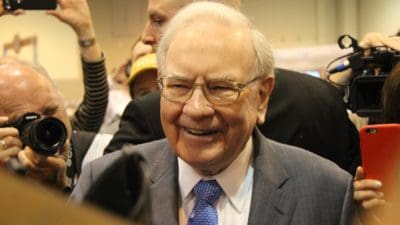The Rolls-Royce (LSE: RR) share price hasn’t aroused much interest from investors so far in 2021. It’s down 16% against a flat FTSE 100.
Personally, I’m very interested in the stock. In fact, I think I could even double my money by buying Rolls-Royce shares at their current price of 94p.
Here, I’ll discuss why I think the shares are attractive at this level. I’ll also look at the potential risks to my investment case.
Quality business
Legendary investor Warren Buffett once said: “It’s far better to buy a wonderful company at a fair price than a fair company at a wonderful price.” But best of all, he relishes opportunities to buy great companies “when they’re on the operating table”.
There was a time when my colleague Peter Stephens confidently wrote: “Rolls-Royce is undoubtedly a high-quality company.” It was a view widely shared by us Motley Fool writers.
Quality-focused institutional investors were also keen on the company. It was one of the largest holdings of the Sanlam Private Wealth Global High Quality fund. It was also owned by star fund manager of the day Neil Woodford on the basis that “it remains a quality business with superb technology, operating in an industry with very high barriers to entry.”
The Rolls-Royce share price tumbles
In more recent years, Rolls-Royce has faced significant challenges that have hurt its financial performance and share price. Some have been internal, including a bribery scandal and durability issues with its Trent 1000 engine. Some external, notably the 2014-16 oil price plunge and current pandemic.
My colleague Edward Sheldon is downbeat on the company. He explained: “The reason I don’t see much investment appeal in Rolls-Royce is that I view it as a ‘low-quality’ stock.”
Hallmarks of quality
I think the bull/bear case for Rolls-Royce largely comes down to which of the following statements you think is nearest the truth:
- Rolls-Royce is a high-quality business on the operating table.
- Rolls-Royce is a low-quality business.
Personally, I lean heavily towards the first statement. I think Rolls-Royce retains many of the hallmarks of a quality business, including market leadership in several of its key end markets and high barriers to entry.
Rolls-Royce share price potential
Management’s aiming to deliver at least £750m of free cash flow (FCF) next year. Rolls-Royce’s market capitalisation at its current share price of 94p is £7.9bn. Therefore, the prospective FCF yield is 9.5%. I think this is highly attractive.
Back in its share price heyday of 2013/14 — when it was valued as a quality business — its market capitalisation reached as high as £23.8bn, and its FCF yield as low as 3.3%.
If it hits its FCF target of £750m next year, I reckon Rolls-Royce’s FCF yield will move back towards a quality-company rating, and I could easily double my money from the current share price.
Risks to my investment case
Rolls Royce’s FCF target is dependent on the success of a restructuring programme, and management assumptions on the expected recovery in engine flying hours. If either proves too optimistic, there’s a risk it will not meet the FCF target.
Furthermore, if the company were to continue struggling to deliver the cash flow, profit margin and return on capital that the market demands to value it as a quality business, Rolls-Royce’s share price may not enjoy an upward re-rating over the longer term.







